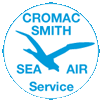|
||||||||||
|
|
||||||||||
|
A Brief History of Sea-Air Transportation ‘Sea-Air' transportation is not new. Multimodal transportation (i.e. two or more modes) has been in existence since trade began. The 1960's saw the start of mass-market sea-air operations on two routes; Japan to Europe via North America and At that time ocean vessels from Airlines on the North America/Europe trade were also seeking eastbound freight especially from So Japanese goods were shipped to Charter airlines flying in supplies to the Another difficulty for airlines was matching the varying volumes they were able to attract with the finite capacity they were trying to fill. This produced unreliable transit times especially during the peak seasons. Whilst these two markets varied greatly in their degrees of sophistication and the products being shipped, they were similar in two key respects: - 1. They were both, and still remain, predominantly shipper-controlled. In the following years traffic flows, aircraft types, vessel and aircraft scheduling change and their interest in the sea-air mode of transport waned. Similar situations continue to arise elsewhere. Airlines flying from Sea air transportation seemed as though it would always remain a very small percentage of the overall tonnage moving from Asia to The UAE, centring on From the start sea air services offered a simple rating system in US Dollars per kilo, similar in structure to airfreight, that covered the through movement from origin port to destination airport. The Combined Transport Document or CTD issued has a similar level of liability to that of an airline's Air Waybill. Organisations involved in sea air services include some of the world's major forwarders, shipping lines, airlines and multi-national commercial companies as well as many smaller operations. They are all-important and have helped to make sea-air a respected mode of transport. We hope soon to call you a client! 22 November 2005 Cromac Smith Ltd, Leamington Spa, Warwickshire, U.K. |
||||||||||
|
|
||||||||||
